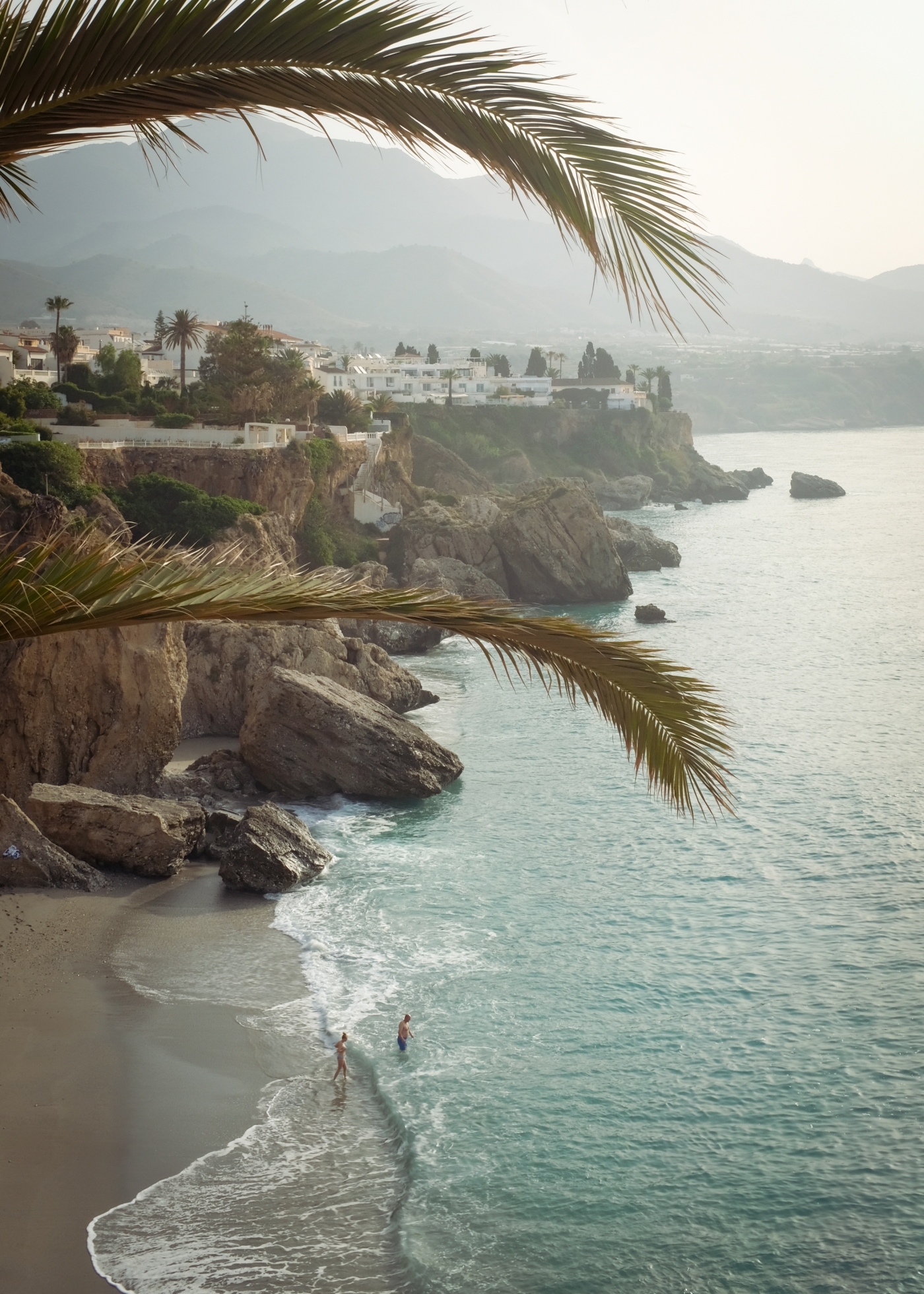Spain’s most populous autonomous community, Andalucía, or Andalusia, is abundant in history and culture. Flamenco was born here, emerging from a fusion of Moorish, Romani, and Sephardic influences. Every two years, Seville, the region’s capital, hosts the largest flamenco celebration in the world. Two hundred and fifty miles to the east, the opulent and fortified Alhambra provides a glimpse into what paradise on earth looked like during Europe’s last Muslim state, the Emirate of Granada. Further north, Córdoba‘s Mosque-Cathedral recounts Islamic Iberia at the height of its glory, when it was regarded as a center of knowledge, learning, and enlightenment across all of Mediterranean Europe. Lined up against such a tableau, Andalusia’s easy, breezy southern coast is often relegated to the backseat.
Of Andalusia’s four coastal regions—Costa de la Luz, Costa del Sol, Costa Tropical, and Costa Almería—Costa del Sol is the most well-known. The Sun Coast is pleasantly idle, a radiant paradise for enjoying life’s simple pleasures. Along its hundred-mile shoreline are beaches, waterfalls, caves, dunes and even Europe’s largest stupa. Here are a few places along the Costa del Sol not to leave unexplored.

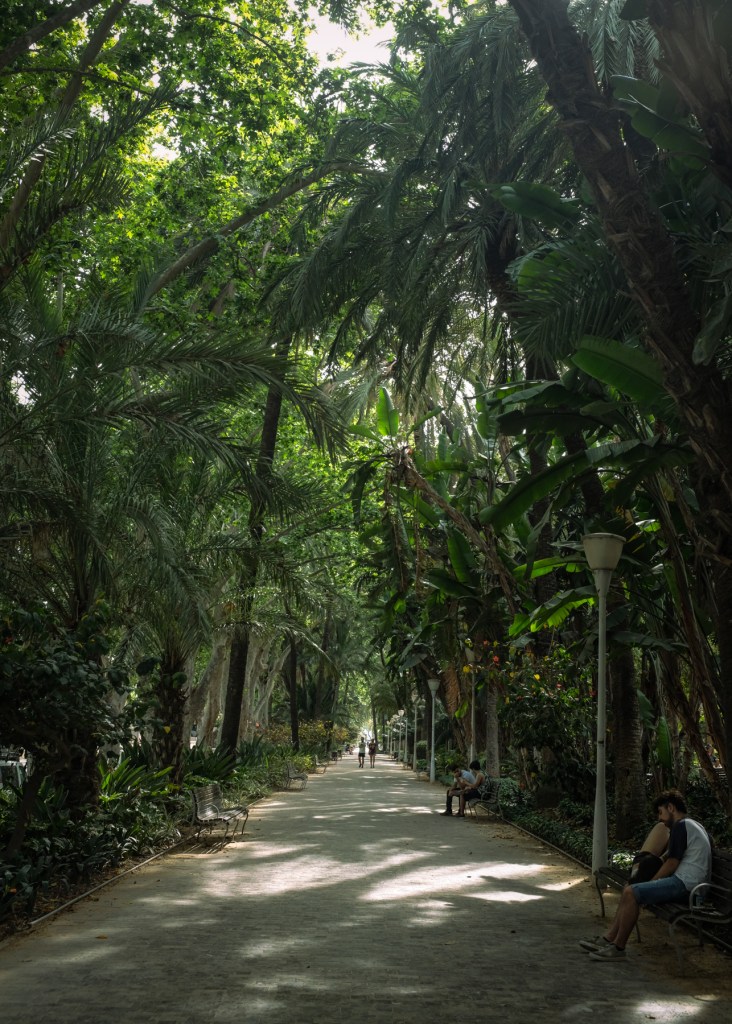

Málaga: Capital of the Costa del Sol
May is the best time to visit Málaga, gateway to the Costa del Sol and Andalusia’s second largest city after Seville. When the towering jacaranda trees come to life, the boulevards are awash in their purple rain. A delightful mix of nature and technology, Málaga is home to lush botanical gardens, state-of-the-art co-working cafés, a beloved laid-back beachfront, and one of Spain’s most elegant streets—the glitzy Calle Larios, inspired by the sprawling avenues of 19th-century Chicago. Between the pristine streets of the old town, modern tabernas serve tapas with some seriously creative and delicious twists. Among them: grilled razor clams with fried almond, lime, and soy dressing; and smoked mackerel and melon granita served with ajoblanco—a traditional Malagueño cold soup made of crushed almonds, garlic, and bread. All this makes Málaga the ideal diving board for plunging into the Costa del Sol.
Nerja: Europe’s Balcony
An hour to the east of Málaga is Nerja. Under Moorish rule, it was known as Narixa, which meant “plentiful spring of water.” Today, it is a bewitchingly beautiful beach town crowned by a rocky headland—the grandiose Balcón de Europa—where the Mediterranean waves clap and bubble over white sand beaches. On the subject of beaches, Nerja is blessed with several. The central playas of Calahonda, La Caletilla, and El Salón are all within a few steps from one another, while lively Playa de Burriana is the furthest and largest of them all. For a truly unique experience, take to the sea in kayak, row along the sparkling jade shoreline, and cool off with a crisp, freshwater shower underneath the waterfall of Maro.
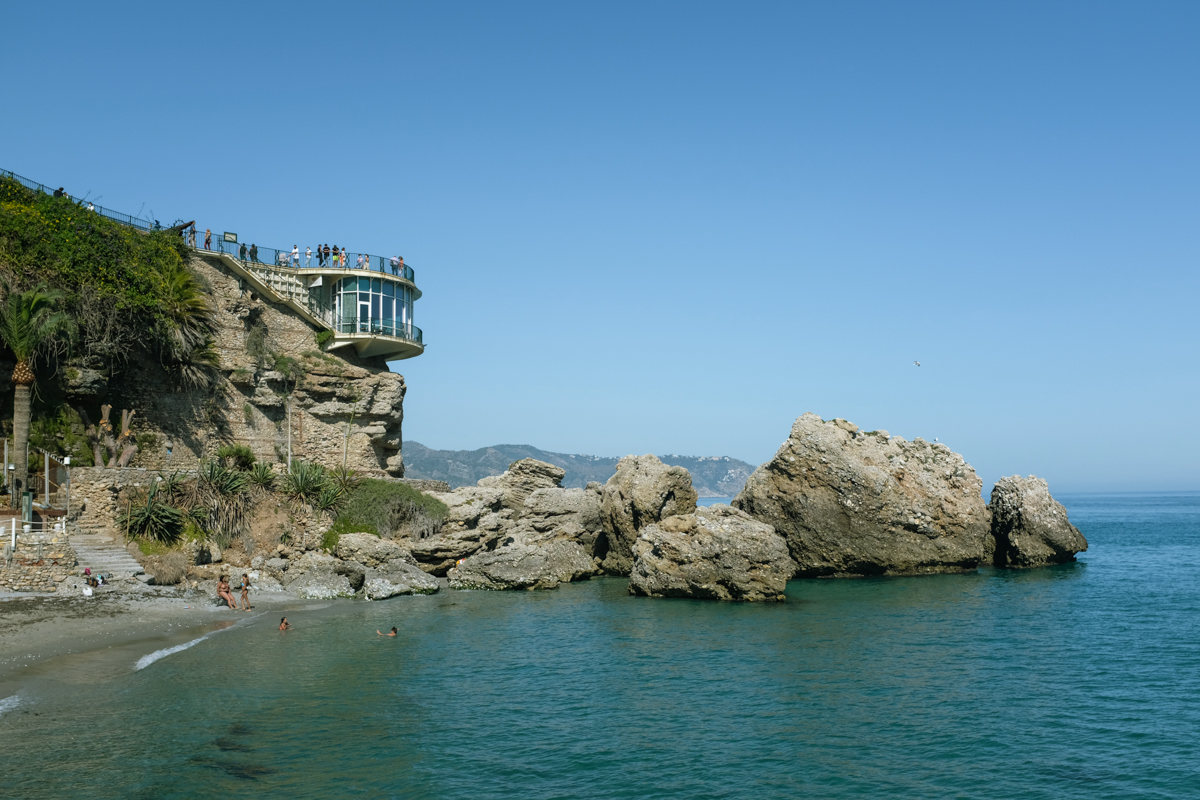
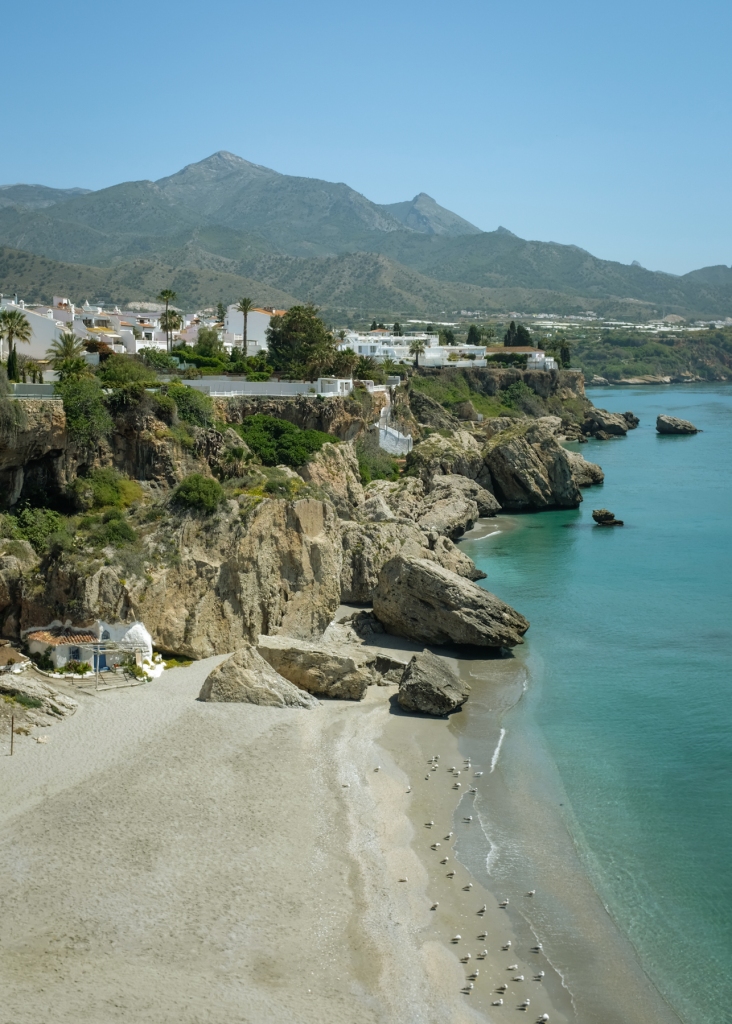
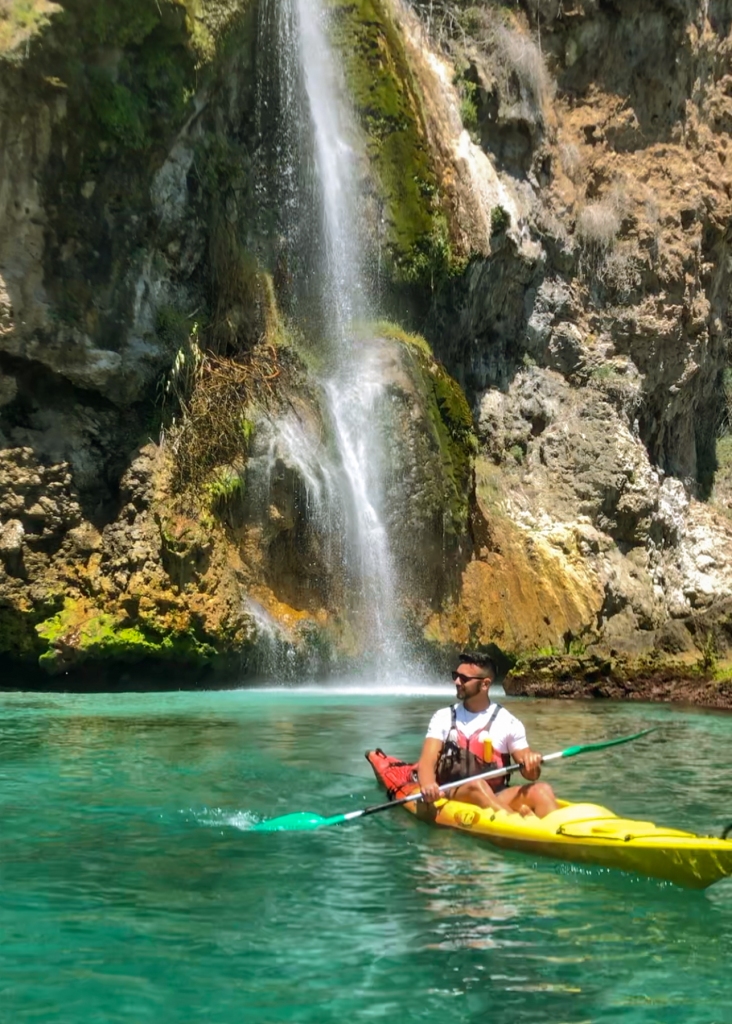

The old Narixa can still be found by following the Río Chíllar out of present-day Nerja. This river walk, a six-hour back-and-forth excursion, is made almost the entire time in ankle-deep water. The trail begins along the paved streets of Nerja and runs along a dried riverbed until it crosses a small hydroelectric dam, at which point the stream of Chíllar finally emerges, swallowing the trail and playfully guiding wanderers through luminescent pools and sun-speckled gorges to the precious waterfall of Vado de los Patos. In the warmth of the Andalusian spring, it is a refreshing and beautiful way to experience the gentle nature of southern Spain.



I lay on tapestries of magic colors as sweet dreams closed my eyes. Narixa, my Narixa, sprang from among the flowers to bathe me in all her beauty.
Ibn Sa’adi, Arabian poet, 917
The White Village of Frigiliana
A 15-minute bus ride to the north of Nerja is Frigiliana, the most beautiful village along the Costa del Sol. Nestled above the hills with expansive views of the Alboran Sea, white walls take the place of white sands. Frigiliana is a gleaming example of one of Andalusia’s hallmarks—the pueblos blancos—villages washed white with lime to keep cool under the sun.



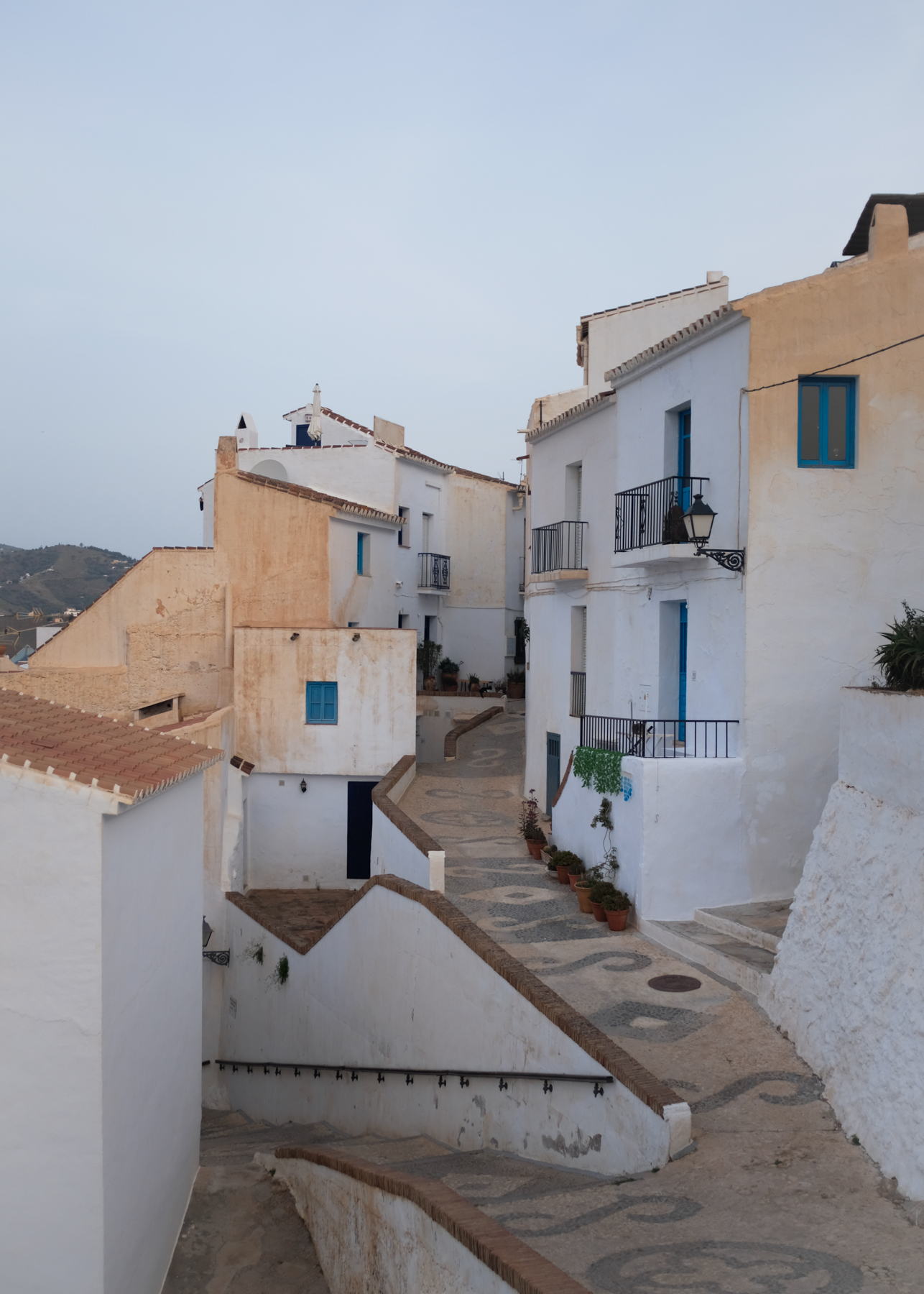
Many pueblos like Frigiliana already existed in the Roman era, but only took on their characteristic look during the time of Al-Andalus, when much of the Iberian Peninsula was under Muslim rule. Following several epidemics between the 16th and 19th centuries, the practice of painting of houses using slaked lime continued as a means of disinfectant, thus cementing a centuries-long tradition that now forms an inextricable part of Spanish heritage.
Benalmádena: Center of Enlightenment
The town of Benalmádena is connected by a five-mile promenade to Torremolinos, the gay mecca of southern Spain and home to nude rooftop pools, drag bars, and beach clubs dressed like Pride Month all year round. In stark contrast to Torremolinos, Benalmádena hosts one of the holiest sites in all of Europe: it is home to the largest stupa on the continent.
A stupa, Sanskrit for “pile,” is a Buddhist monument dedicated to enlightenment. Originally in what is now modern-day India, great teachers were buried in mounds. Over the course of millennia, these mounds grew in architectural complexity and religious significance, evolving to become vessels of dharma—the doctrine of the Buddha.

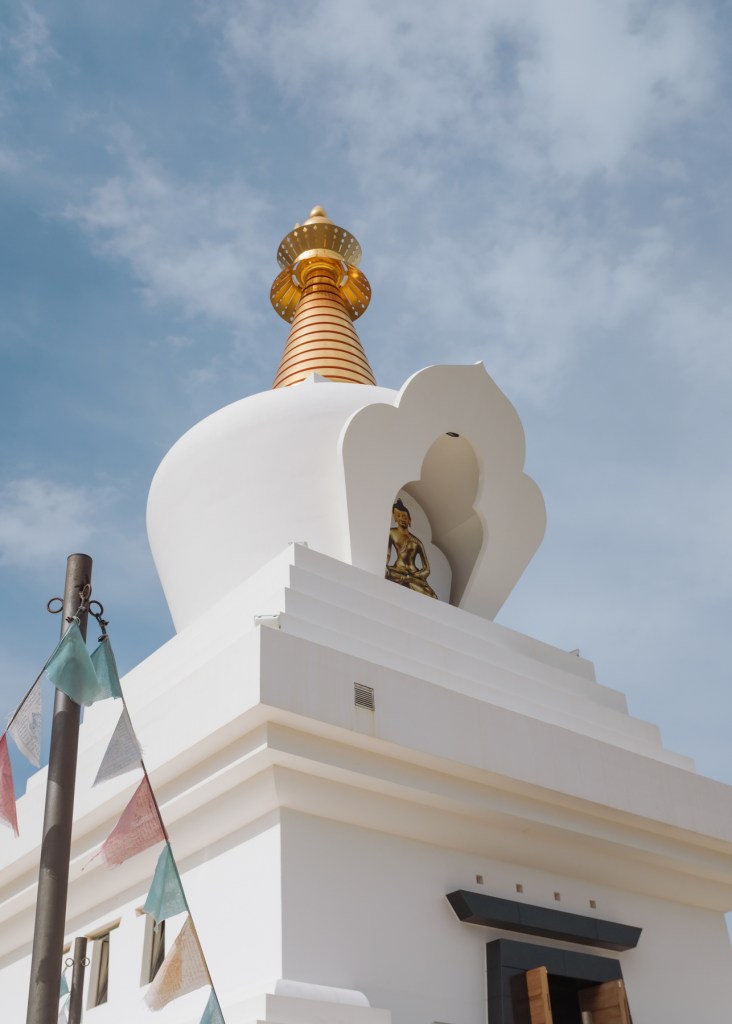
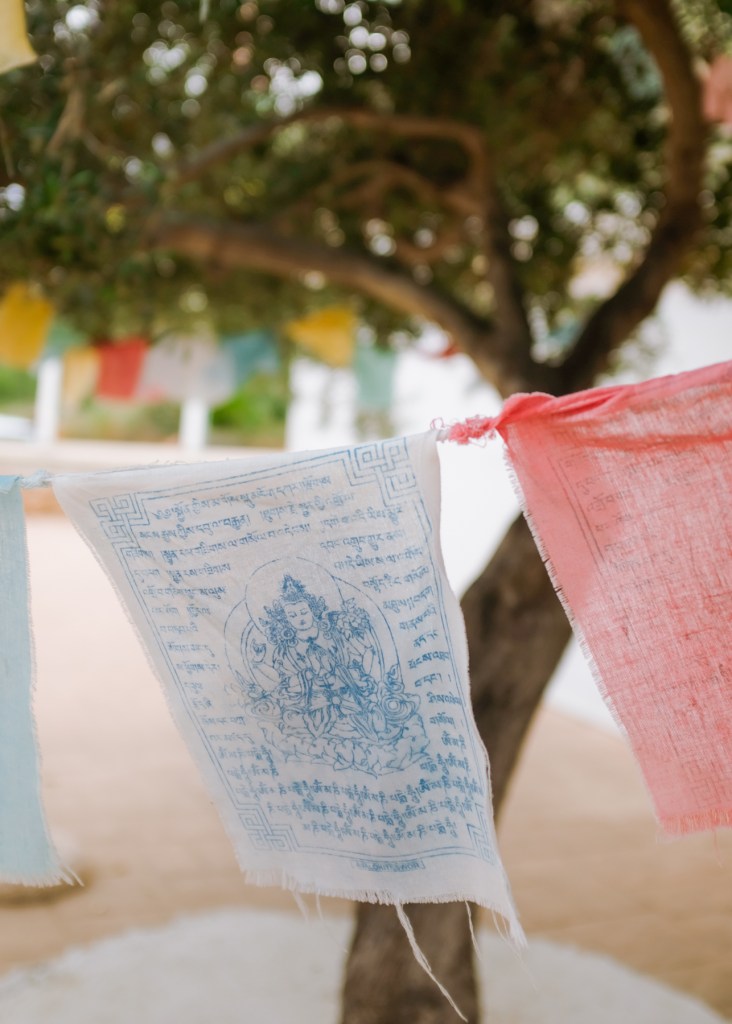
Benalmádena’s stupa is constructed in the Bhutanese and Tibetan style and therefore, it is also known as a chörten (མཆོད་རྟེན་). Its shape has been carefully considered to represent the elements: the square base stands for the earth, the dome for water, the spire for fire, and the crescent moon for air. Between the structure’s ceiling and the golden spire is a sealed treasure chamber. Within it are sacred objects including half a ton of prayer rolls, a fifty-foot Tree of Life symbolizing the cosmic axis, and six thousand tsa-tsas (ཚ་ཚ་)—clay votive tablets dedicated to the Buddha.
Marbella and the Golden Mile
Long strolls, beach time, and yachting—for those who have the means. They summarize the glamorous yet discreet vibe of Costa del Sol’s genteel Marbella. Up until the 1950s, Marbella was just a small village of nine hundred inhabitants halfway between Málaga and the Strait of Gibraltar. It was only until after the aristocrat Prince Alfonso of Hohenlohe-Langenburg opened his Marbella Club that the rich and famous started descending upon the village. Over the decades, its luminous beaches, luxurious Puerto Banús marina, and gilded hilltop estates have attracted the likes of Sean Connery, Brigitte Bardot, King Fahd of Saudi Arabia, Princess Grace of Monaco, and Michelle Obama.
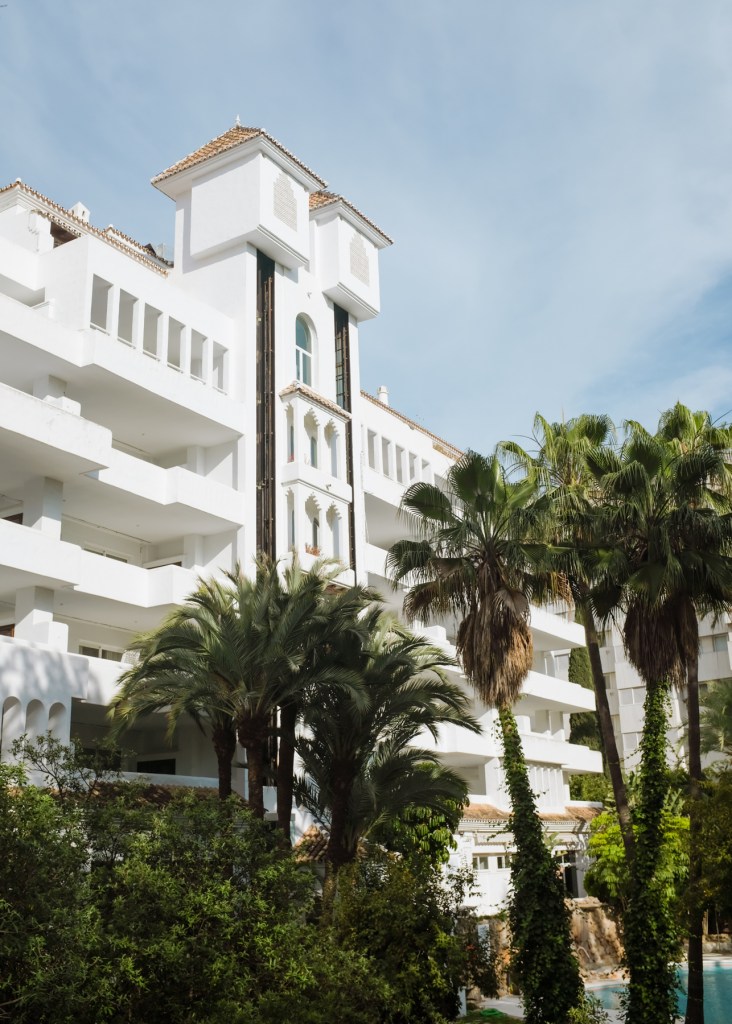


Today, Marbella continues to be a playground for the world’s elite, although there’s also plenty of room for everyone else, too. Downtown is casual, chic, and cosmopolitan, with burger joints, poke diners, and açaí shops standing side by side next to traditional bakeries and tabernas. A walk along the seaside promenade, aptly named the Golden Mile, reveals the town’s true jet-setter flair. All along the waterfront, ritzy restaurants, sumptuous architecture, and romantic embarcaderos tantalize passersby with mirages of faraway escapes. As the Golden Mile winds to a close by the beach of Puerto Banús, pause for a moment above the Río Verde. When the tropical palm trees align under the conical La Concha just right, watch marvelous Marbella transform into a lush South Sea atoll.
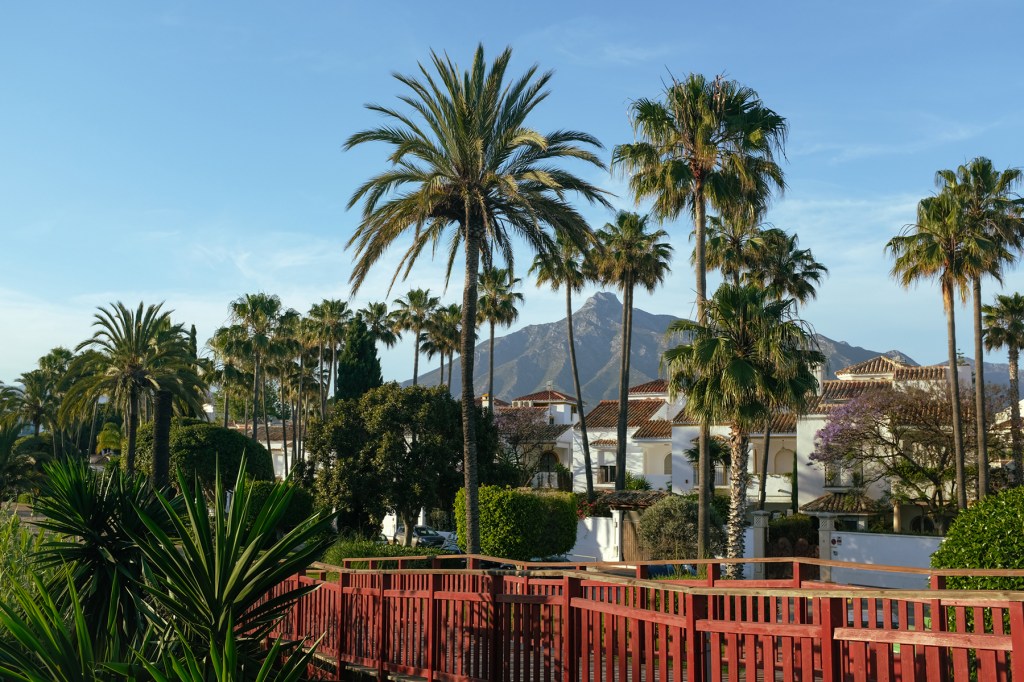

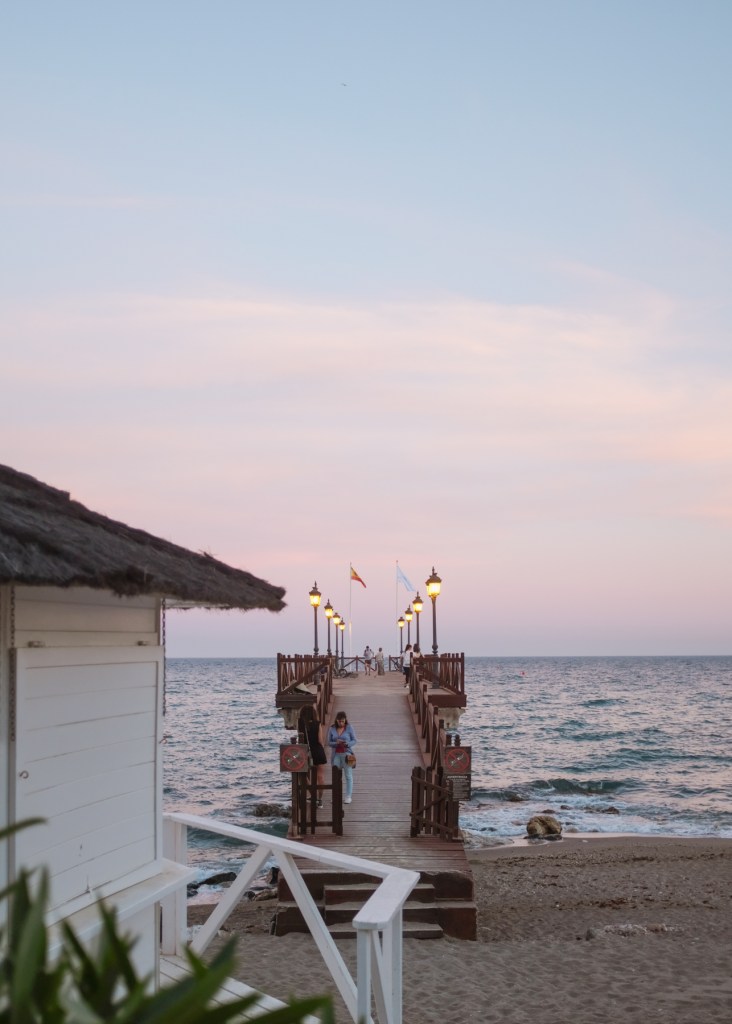

Getting around the Costa del Sol
Rental cars aside, buses are the best way to travel along the Costa del Sol. Bus services are affordable and reliable, although lines run less frequently on weekends and holidays. From Málaga, a one-way ticket to Nerja with ALSA costs €5.35, while a one-way ticket to Marbella with Avanza costs approximately €6.75. The village bus from Nerja to Frigiliana costs €1.20.
Since 2018, Uber also serves Málaga and the western stretch of the Costa del Sol, including Torremolinos, Benalmádena, and Marbella.
